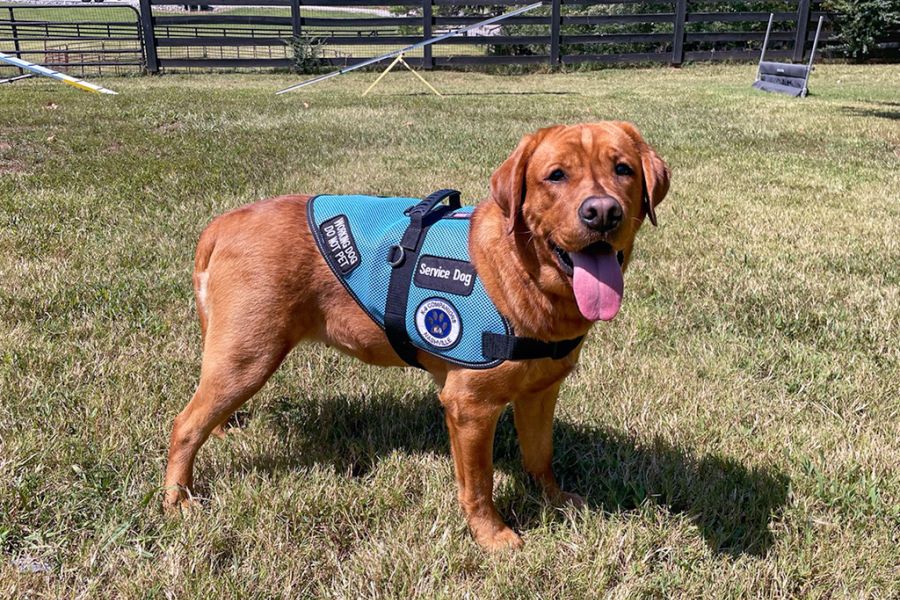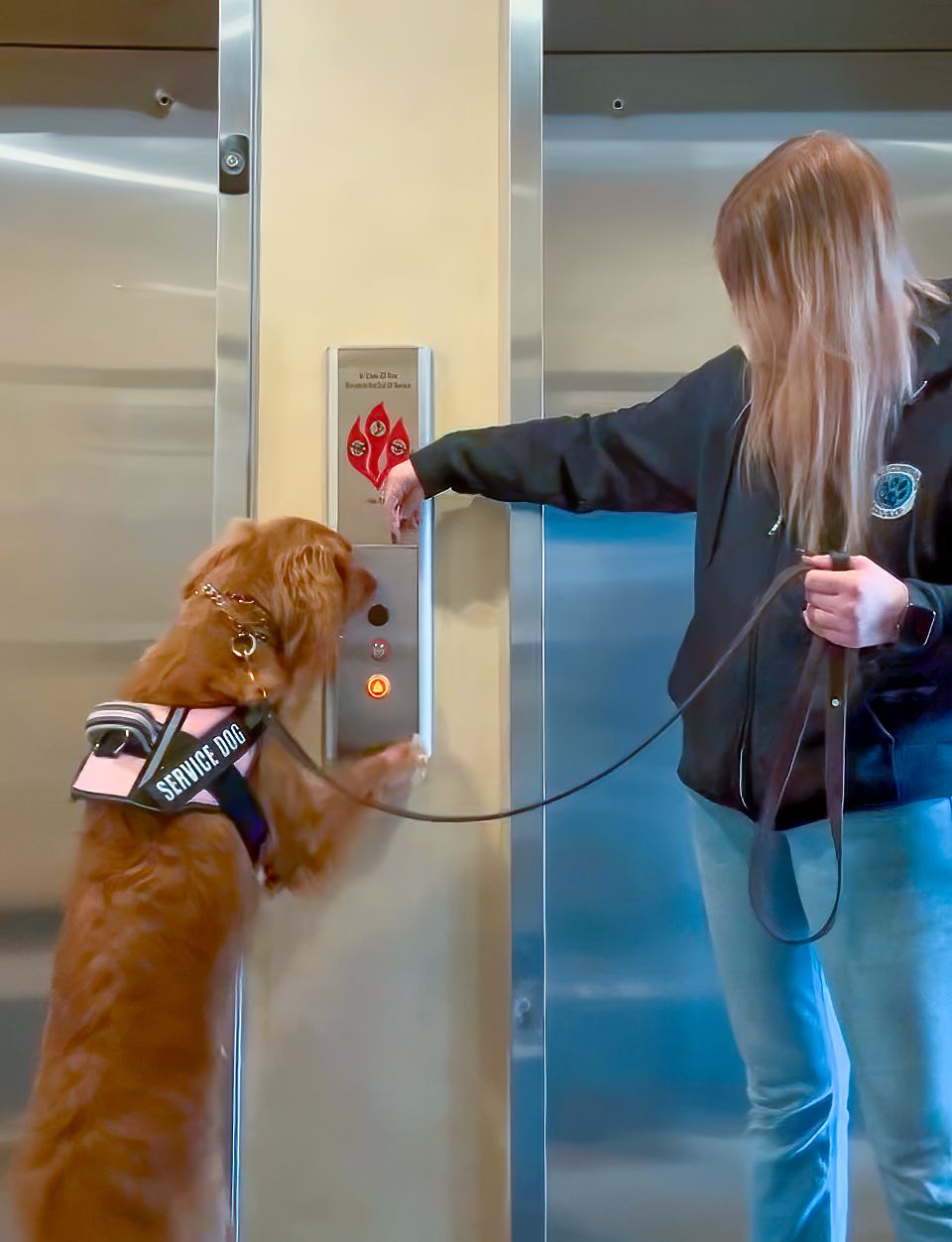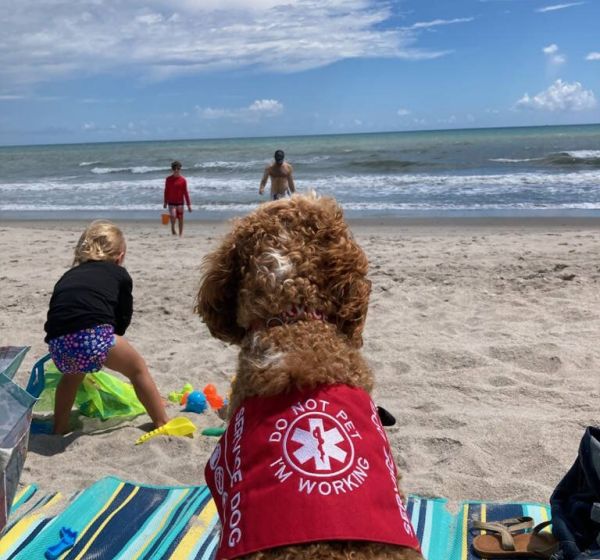
Service Dog Training & Certification
We work with several non-profit funding agencies who may help with funding for qualified veterans and families with children with disabilities. We also specialize in training service dogs for children with autism and many other disabilities. Service dogs require a doctor’s note. Service dogs are trained to do a minimum of three tasks for their handlers that they cannot do for themselves. This is what separates a service dog from an ESA (emotional support animal) who provides comfort by just being with the handlers.
The term ESA was initially meant only to get dogs into housing. There was never a requirement for an ESA to have training at all. They should never be confused with a Service dogs.
Dog Training Program Components
Courses For Your Dog
At K-9 Companions Dog Training, we specialize in training for clients with disabilities such as veterans with PTSD or TBI, and children with disabilities as well as mobility issues. Dogs can be taught many various behaviors, depending on the client’s needs. Examples of behaviors taught are:


-
Opening doors, drawers, and refrigerators.
-
Retrieving specific objects (DVD’s, keys, remotes, etc.).
-
Retrieving dropped articles.
-
Turning on or off lights.
-
Alert toward danger, doorbell, or telephone.
-
Circle and blocking for personal space.
-
Watching behind the handler with passive alert.
-
Medication alert.
-
Balance assistance.
-
Interrupting anxiety.
-
Applying deep pressure.
-
Walking slow to lead.
-
Carrying objects.
Autism Service
For adults or children with autism, Service Dogs can be very helpful. For children, the dogs can prevent elopement in public via tethering from the dog to the child. If the child is missing in the house or outside, the dog can be taught to “go find”. The dog can interrupt meltdowns and apply deep pressure for comfort. The dog is also a help in social situations as well.
Mobility-Walking
In order to help people with mobility issues, Service Dogs can be taught to pick up things and bring them
back to the handler. The dog can be used to pull someone up out of a chair or assist them getting into a chair. The right size dog can help them get up off the floor as well. The dog can brace if the handler gets off balance or when reaching up to get something.
Wheelchair Assistance
Service Dogs can be taught to open and close doors, retrieve things from the ground or in a grocery store and bring them back to the lap. Turn on and off lights and retrieve things from countertops and refrigerators.
Seizure Response
Seizure Response dogs can warn their owners of an upcoming seizure. We teach the owners to do this part themselves. The response part of the equation involves the dog, going to alert a family member by nudging with a paw. Laying on the chest for deep pressure therapy or under the head if appropriate. Getting a med bag or a bottle of water when requested.
Diabetic Response
A Diabetic response Service Dog is taught to alert the owner of an upcoming low blood sugar issue. We teach the owner to do this part at home. The dog can be taught to go to another person and nudge in the case the handler cannot wake up. The dog can also retrieve meds and water, as well as being cross trained for balance and any other issues the diabetic person might have.
Adult Disabilities
MD-lBM-ALS-Parkinson’s Service Dogs can be trained for balance, retrieval, helping up from chairs and beds, opening doors, drawers, refrigerators, and retrieval of items.
Children’s Disabilities
Snuggle in place of parents, retrieval of dropped items, comfort, reacting to door alarms, getting the parent for assistance, and much more.
Service Dog Training Criteria
We require a letter from a licensed physician or psychiatrist prior to training a Service Dog. Please do not inquire about training a Service Dog if you simply want to be able to take your pet dog into places that otherwise would not allow him. This is an ABSOLUTE requirement.
We require that the dog’s temperament is right for the job. The dog must not be aggressive to other dogs or people. The dog must be highly social, with good nerves, not being fearful of new places or people.
We only certify dogs that we train in the following:
Level 1
On Leash Obedience problem solving and manners
Level 2
Off Leash Obedience problem solving and manners, CGC testing. Minimum of 3 behaviors taught that can help the owner (that the owner cannot do for themselves).
Level 3
The dog must pass a CGC (Canine Good Citizen) test. This test is available at the facility but must be conducted with the owner of the dog as the handler.
The dog must prove to be good in public. It must not be aggressive to dogs or humans, must stay by the owners side without being a nuisance, and must follow commands without need of forceful correction. The dog should be able to navigate through crowds of people, in and out of doorways, and calmly lay down next to or under a table as appropriate.




































